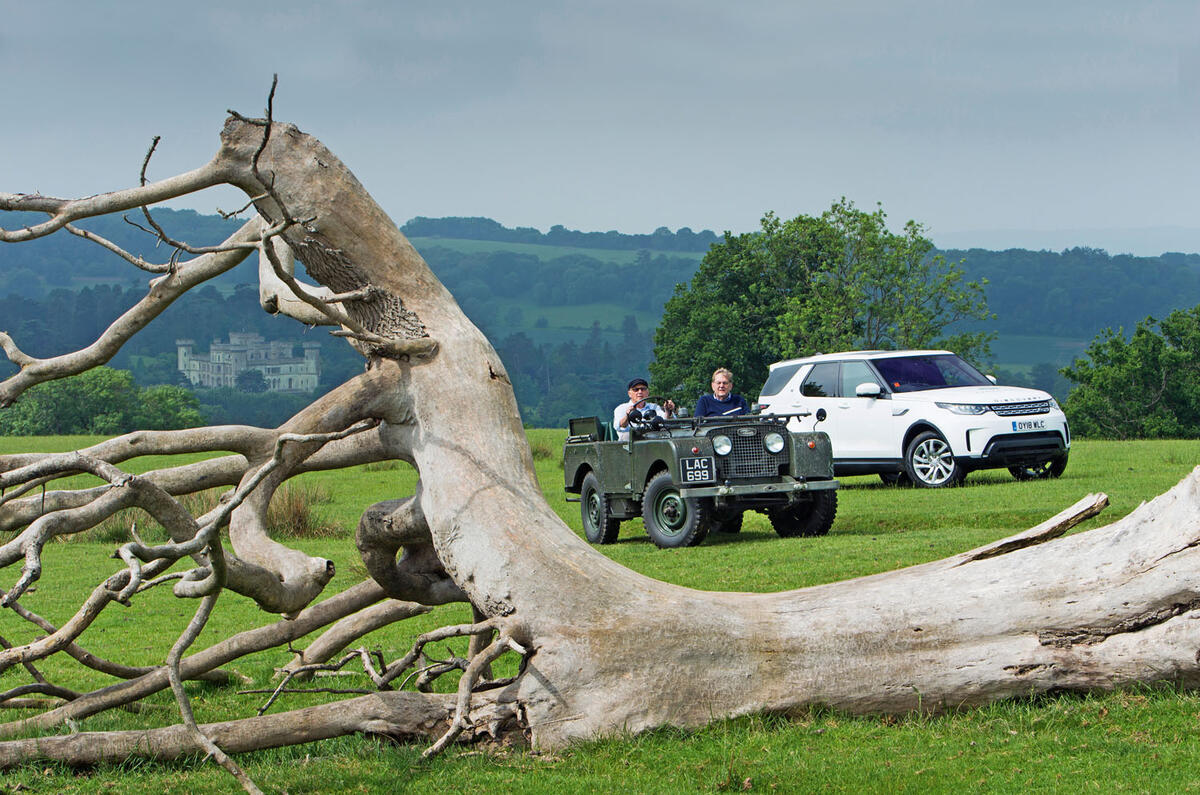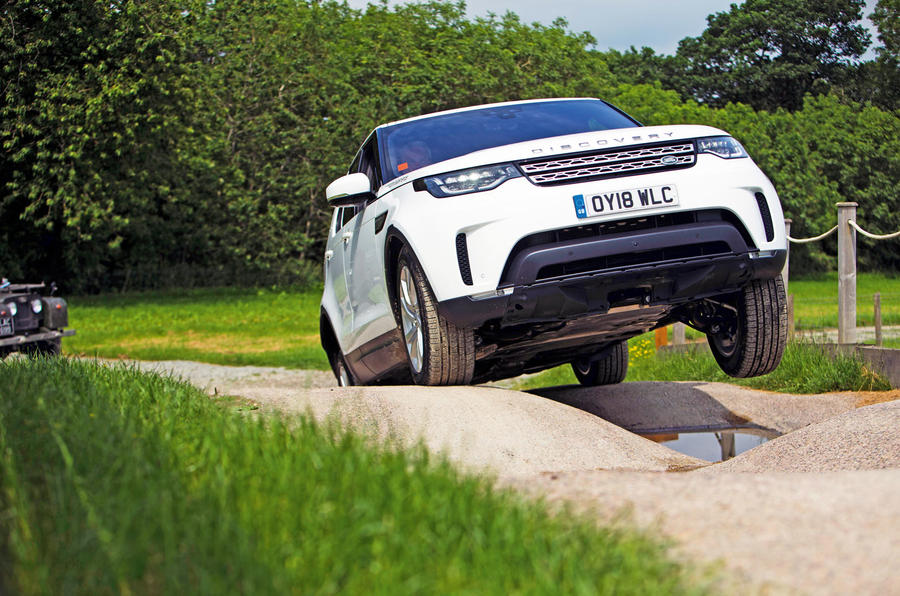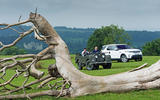On the face of it, you’d battle to find two more different road-registered vehicles than a crude, diminutive and utterly charming Land Rover Series One and a tall, plush and extremely imposing latest-spec Land Rover Land Rover Discovery. A glance at our photos instantly confirms their differences, even if you didn’t know them perfectly well already.
Yet these models have an inextricable connection and always will. Each is the most capable off-road vehicle Land Rover could build for customers in its era, and that (barring specials like Mercedes’ vast and extraordinary Unimog) makes each of them arguably the best off-roader an ordinary person can buy.

We’ve brought them together today at the epicentre of Land Rover off-road development for the past half-century, the Eastnor Castle estate in the Malvern Hills, to understand why each is the way it is and to get a flavour of their relative capabilities. It also seems a fitting way to mark the firm's 70th anniversary year.
Along for the ride is legendary Land Rover engineer Roger Crathorne, who joined the company as an apprentice in 1963, was heavily involved in durability testing of all new models from then on and who retired in theory in 2014 to spend more time playing golf and fettling his own old Landie collection – although you’ll still see his face at every important Land Rover event going. Such as this one.






































Join the debate
Add your comment
Two years on
and time and sales have not been kind to the Discovery 5, its a real loser after the popularity of the Disco 3 and 4.
The series one looks great,
The series one looks great, but you wouldn't want anyone seeing you in the Discovery, one of the worst proportioned vehicles on our roads. How did they get it so wrong?
Roger Crathorne says.......
......"it wouldnt make much sense if we built vehicles that wave their corners in the air"....
er, isnt that white Discovery doing just that?!!!
Of course no 4x4 could be capable of massive axle articulation and being safe to drive at over 100 mph, so this behaviour is normal these days.
I have to say that this reads like a Land Rover advert to be honest, there isnt even a journalists name against the article....trying to compare what is essentially a tractor against a glorified MPV - and just as ugly as an Asian MPV...where they got the 'extremely imposing' description from I dont know, this design is a joke